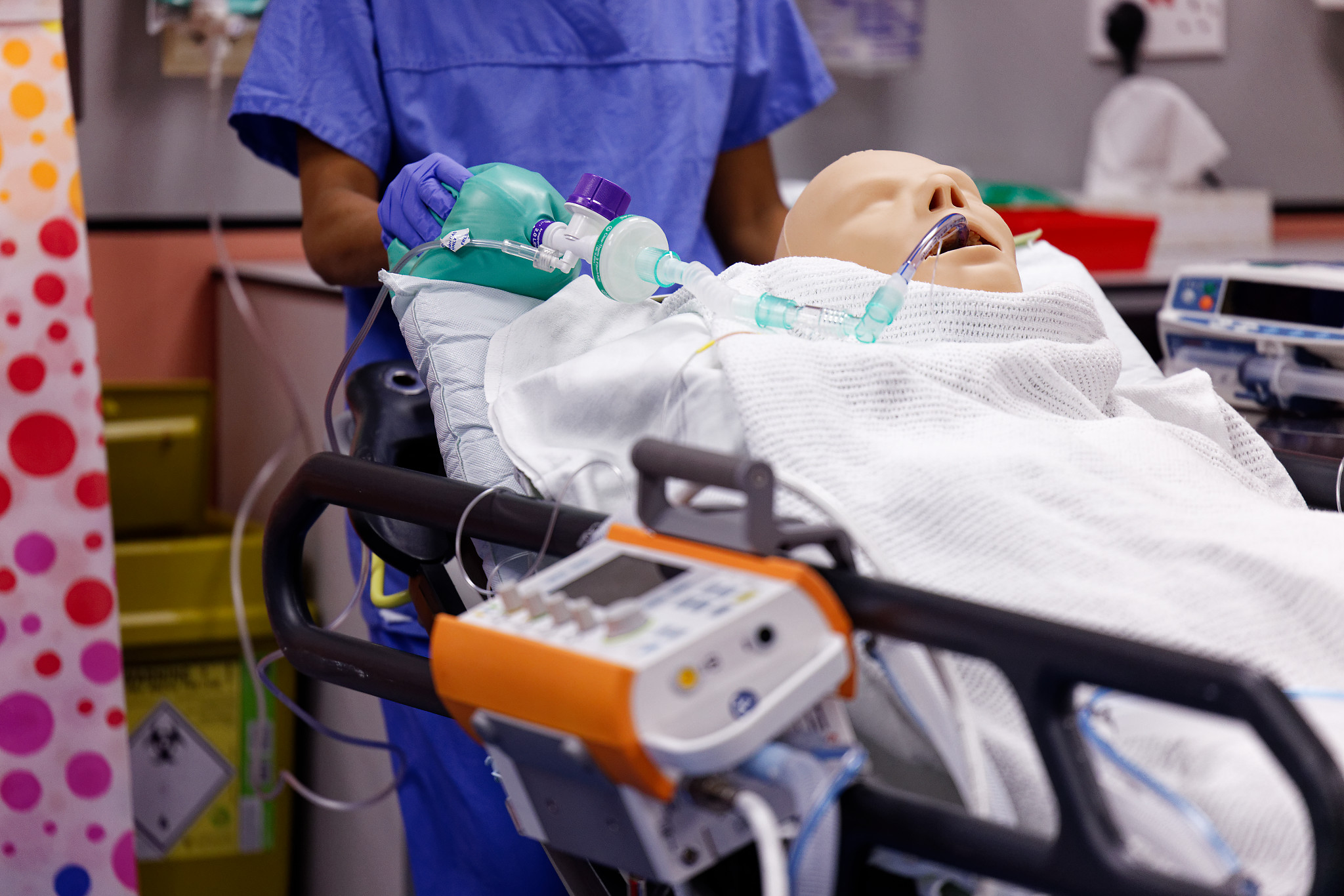
Intra-Hospital Anaesthetised Patient Transfer
Outside-Theatre ChecklistsUse this resource in conjunction with your real-world training

Experience Summary
In this 360-degree video, watch the team prepare for the safe intra-hospital transfer of an anaesthetised patient by completing the safety checklist.
Clinical Context
The intra-hospital transfer of an anaesthetised patient presents unique challenges and risks. These transfers—whether to imaging departments, operating theatres, or intensive care units—must be planned and executed meticulously to ensure patient safety. Anaesthetised patients are particularly vulnerable due to compromised consciousness, respiratory function, and haemodynamic stability. Ensuring safety during such transfers requires adherence to systematic protocols, adequate staffing, and appropriate equipment.
Anaesthetised patients may require intra-hospital transfer for diagnostic or therapeutic interventions that cannot be performed at the bedside. Examples include CT or MRI imaging, interventional radiology procedures, or surgical repositioning. These patients are unable to protect their airway, may be intubated and ventilated, and frequently require continuous infusions or invasive monitoring. As such, the transfer process essentially becomes a mobile extension of the operating or critical care environment, demanding equivalent standards of care.
Pre-Transfer Preparation
Assessment and Planning: A comprehensive pre-transfer assessment is essential. This includes evaluating the patient’s airway, ventilation status, haemodynamics, and ongoing sedation or analgesia needs. The clinical team must determine whether the transfer is essential and whether the patient is stable enough to be moved.
Communication and Coordination: Inform all receiving and escorting teams of the patient’s condition and the reason for transfer. Effective communication ensures readiness at the destination and seamless handover.
Equipment and Monitoring: Equip the transport trolley with essential monitors—such as ECG, non-invasive blood pressure, pulse oximetry, and capnography. Ensure the availability of portable ventilators, oxygen supplies, infusion pumps, emergency drugs, and suction devices. All equipment must be checked for battery life and functionality.
During Transfer
Escort Team Composition: The team must include an anaesthetist or an appropriately trained clinician, a nurse familiar with critical care or anaesthesia, and a porter. At least one member must be capable of airway management and resuscitation.
Monitoring and Documentation: Continuous monitoring should be maintained throughout. Any adverse events must be documented and addressed immediately. Vital signs should be recorded at regular intervals.
Post-Transfer Handover
Structured Handover: Use a structured handover tool (e.g., SBAR—Situation, Background, Assessment, Recommendation) to communicate clinical information to the receiving team, ensuring continuity of care.
Learning Outcomes
- Understand the steps involved in the safe transfer of an anaesthetised patient
- Understand the role of a safety checklist
